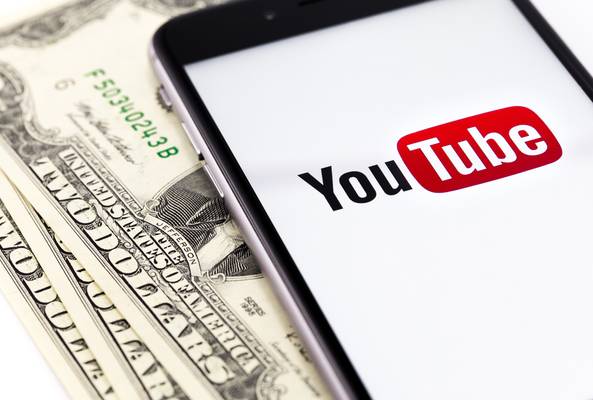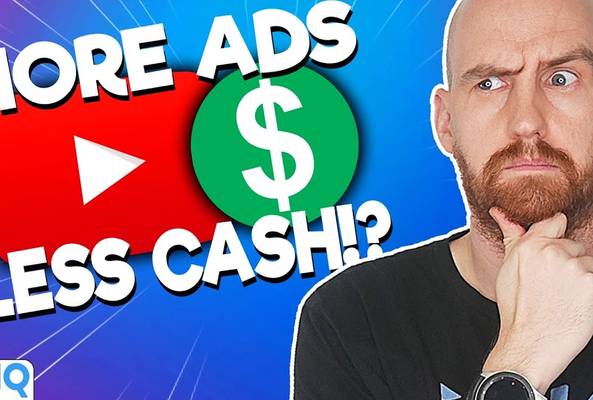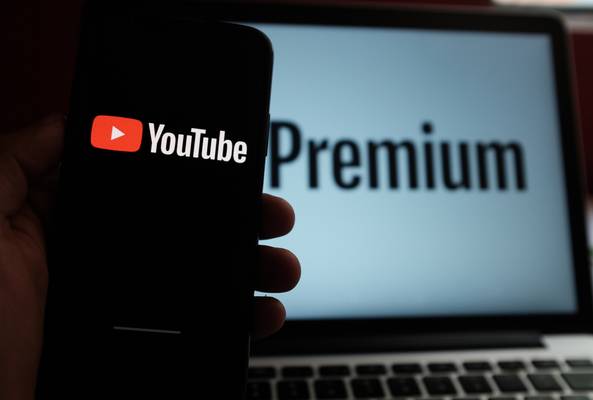Lydia Sweatt is a writer who loves balancing her article/blog time indoors with a healthy dose of nature. She bikes, hikes, and identifies edible plants along the way.
YouTube Monetization: How to Make Money from Videos in 2024

Getting monetized on YouTube is a goal every creator wants to reach. It helps them start side hustles, make YouTube their full-time job, or create a business selling products in physical stores. These days, the possibilities are endless!
But with so many options, how do you monetize YouTube videos in a sustainable, long-term way?
There are several ways to do it, from joining the "standard" program that pays advertising revenue to making money through sponsorships. Let’s start with a beginner's guide on the basics of YouTube monetization.
How to Get Monetized on YouTube
The most common way to monetize videos is through the YouTube Partner Program (YPP). Reaching partner status is an upgrade for your channel, as it helps you monetize your community, and, if you reach certain milestones, make money from video advertisements.
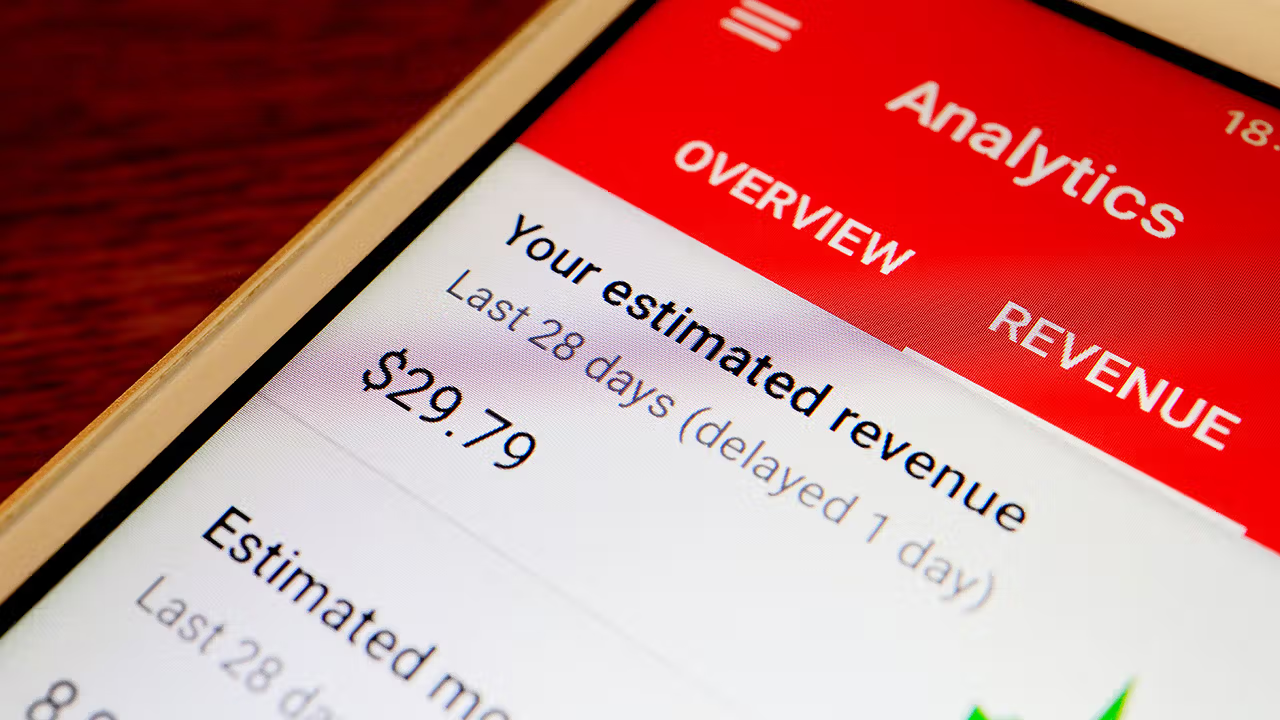
YouTube pays creators through the Google AdSense program, but it takes a while to understand how the system works. For now, just know that when a viewer watches/clicks an ad within your video, revenue is generated. That revenue is then split between you and YouTube, where you get 55% of the money, and YouTube takes the other 45%.
Read More: Google AdSense 101
YouTube Monetization Requirements
Before you can join the YPP, you need to accomplish a few milestones first.
If you want to make money through fan funding, such as Super Chats, Super Thanks, channel memberships, and more, here are the minimum requirements to join the YPP:
- 500 subscribers
- Three public uploads in the last 90 days
- 3,000 public watch hours in the previous 12 months or 3 million public YouTube Shorts views in the last 90 days.
Read more: YouTube Relaxes its Monetization Rules: Only 500 Subscribers Needed!
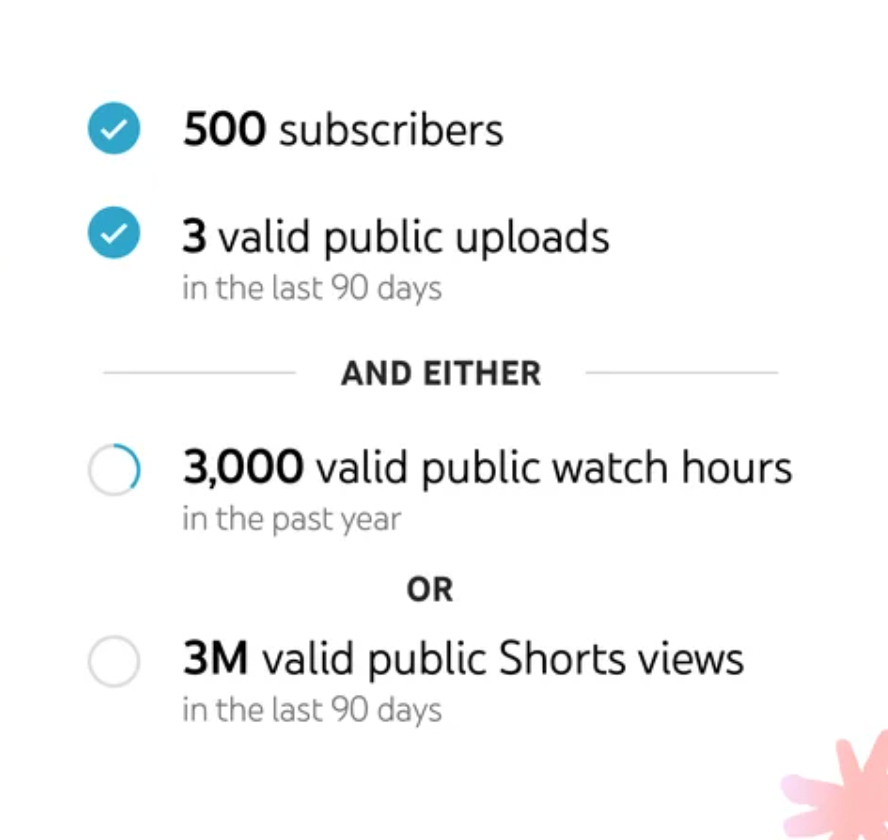
Image credit: Official YouTube Blog
If you want to make money with video advertisements, here are the minimum requirements do that:
- 1,000 subscribers
- 4,000 hours of public watch time within a 12-month period or 10 million public YouTube Shorts views within a 90-day period.
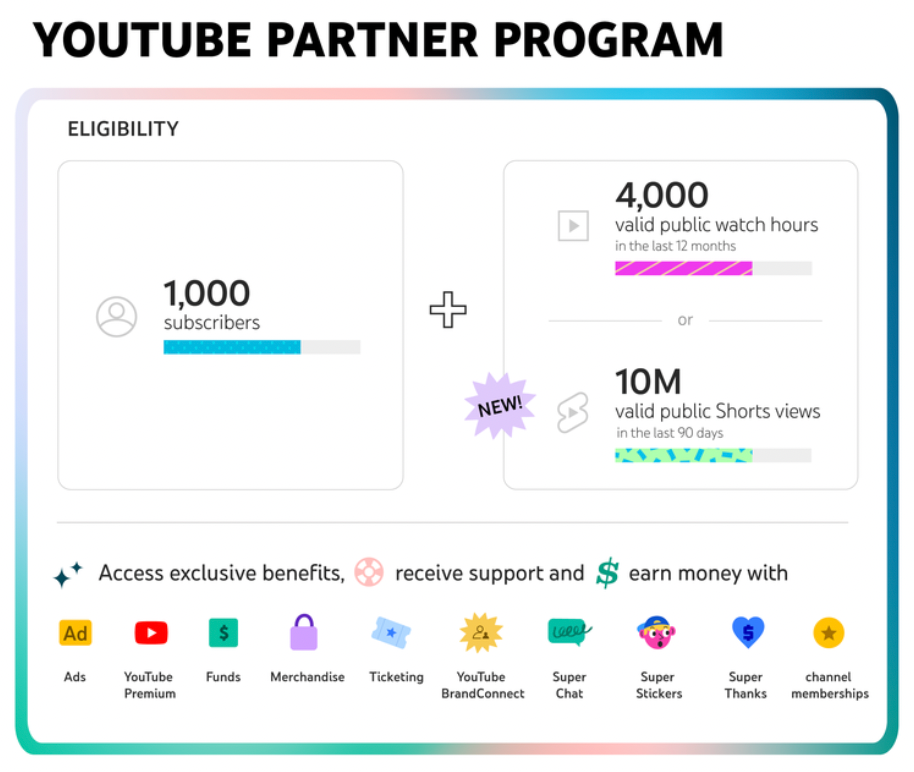
Image credit: Official YouTube Blog
The good news is that once you're in the YPP, you're in. Even if you entered the program with 500 subs and 3,000 watch hours, you don't need re-apply after hitting 4,000 hours and 1,000 subs. You'll simply unlock the revenue tools you didn't have before.
How to Join the YouTube Partner Program
Once you’ve met all of YouTube’s requirements, you’re ready to apply to the YPP! You'll do this on the YouTube Studio's "earn' page, which also tracks how much watch time you have and how many subscribers you've gained. Simply apply on this page when YouTube gives you the green light.
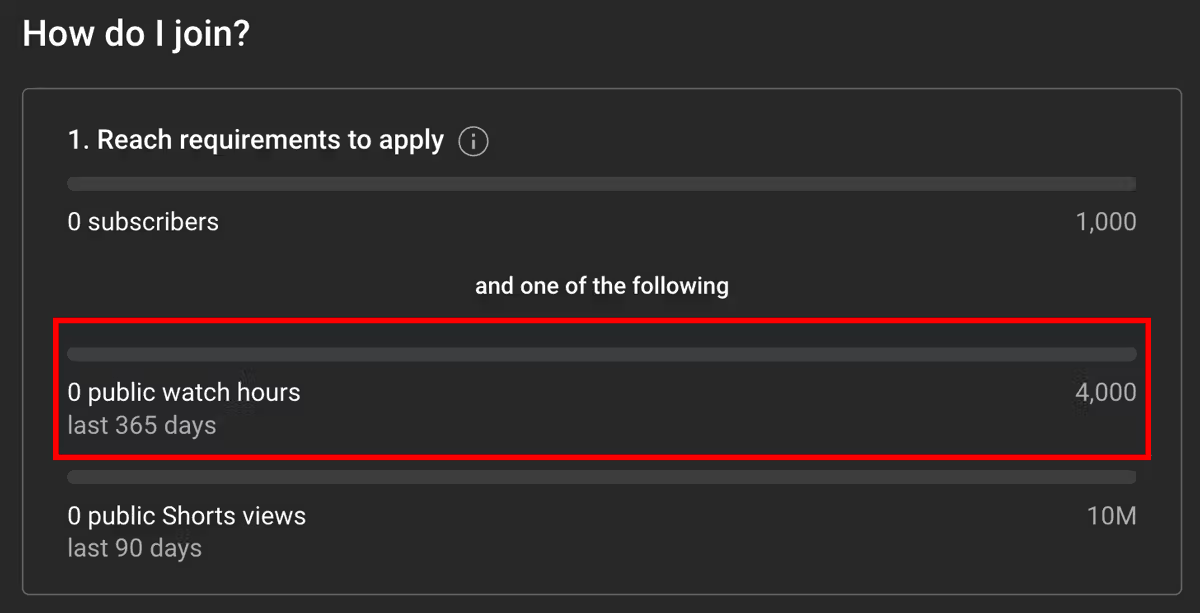
Not sure where to find this in the YouTube Studio? This guide will help you out.
If you apply and are rejected for the first time, you’ll have 21 days to appeal the decision. Then you'll have to wait another 30 days before re-applying.
If you’re rejected a second time, you’ll still have 21 days to appeal, but you can only re-apply after 90 days.
While this may seem harsh, it’s a balanced approach because YouTube is prioritizing new applicants over repeat ones. Use the time to fix anything unsavory on your channel, such as multiple copyright claims or videos that violate YouTube’s Community Guidelines.
How to Enable Monetization on YouTube
Once you enter the YPP, turn on monetization for as many videos as possible. You can do this while uploading new content, but it’s safer to wait until after you upload videos (at least a few hours).
By then, YouTube will have processed your content. You’ll know if the system found something that could demonetize the video, such as extreme profanity, adult themes, copyright claims, etc.
Read More: 14 Ways to Avoid YouTube Demonetization
Here’s how to enable ads on a YouTube video and make money:
- Go to the YouTube Studio.
- Click Content in the left navigation bar.
- Select the video you want to monetize.
- Click Monetization in the left menu.
- Choose which ads you want to display on the video.
- Click Save.
Not all videos will show ads, even if you monetize them. The best way to fully monetize a video (and keep it that way) is to create content in the PG to PG-13 range.

Extra Ways to Monetize on YouTube
YouTube AdSense is beneficial, but it’s not a reliable form of income for creators. Advertisement rates go up and down, so it’s hard to make the same amount of money each year with video ads.
That’s why it pays to understand CPM rates. CPM (cost per mille) refers to the amount of money advertisers pay per 1,000 video views on YouTube. The rates vary depending on your channel’s niche, audience demographics, and more.
Read More: YouTube CPM - 7 Factors Affecting Your Channel's Revenue
Want to earn a stable income on YouTube? Here are additional ways to make money from your videos.
1. YouTube Sponsorship Deals, Brand Deals
With YouTube brand deals, you'll make money by featuring a product or service in your videos. You can work with multiple brands if you want, which leads to more money for your channel and less stress about earning AdSense revenue.

Unlike the YPP, you don’t need 1,000 subscribers and lots of watch time to profit from these deals. Having more subscribers is helpful, of course. But consistent views and an impressive collection of videos are more important. You’re ready to seek out YouTube sponsorships once you have both.
Read More: 11 Companies Matching YouTubers with Amazing Brand Deals
In a small YouTube survey, My Work From Home Money discovered that creators make between $100 and $4,000 per sponsored video. So don’t worry about channel size when looking for sponsors. There are brand deals for small channels, mid-sized channels, and mega influencers who dominate YouTube. Everyone has a chance.
When you’re ready to dive in, read this post about how to get sponsorships for YouTube.
2. YouTube Affiliate Marketing
Did you know you can make money advertising product links on YouTube? It’s called affiliate marketing, and it's an easy revenue stream to set up.
Here’s how it works:
- Sign up for various affiliate programs with different brands/companies.
- Get custom product links to share with your YouTube audience.
- Earn a commission when viewers buy stuff using your link.
Now let's talk about how to do affiliate marketing on YouTube. For beginners, we recommend signing up for the Amazon Associates program. You’ll get access to hundreds of custom links for everyday products, and adding those affiliate links to YouTube videos (in the description section) will help you earn commissions.
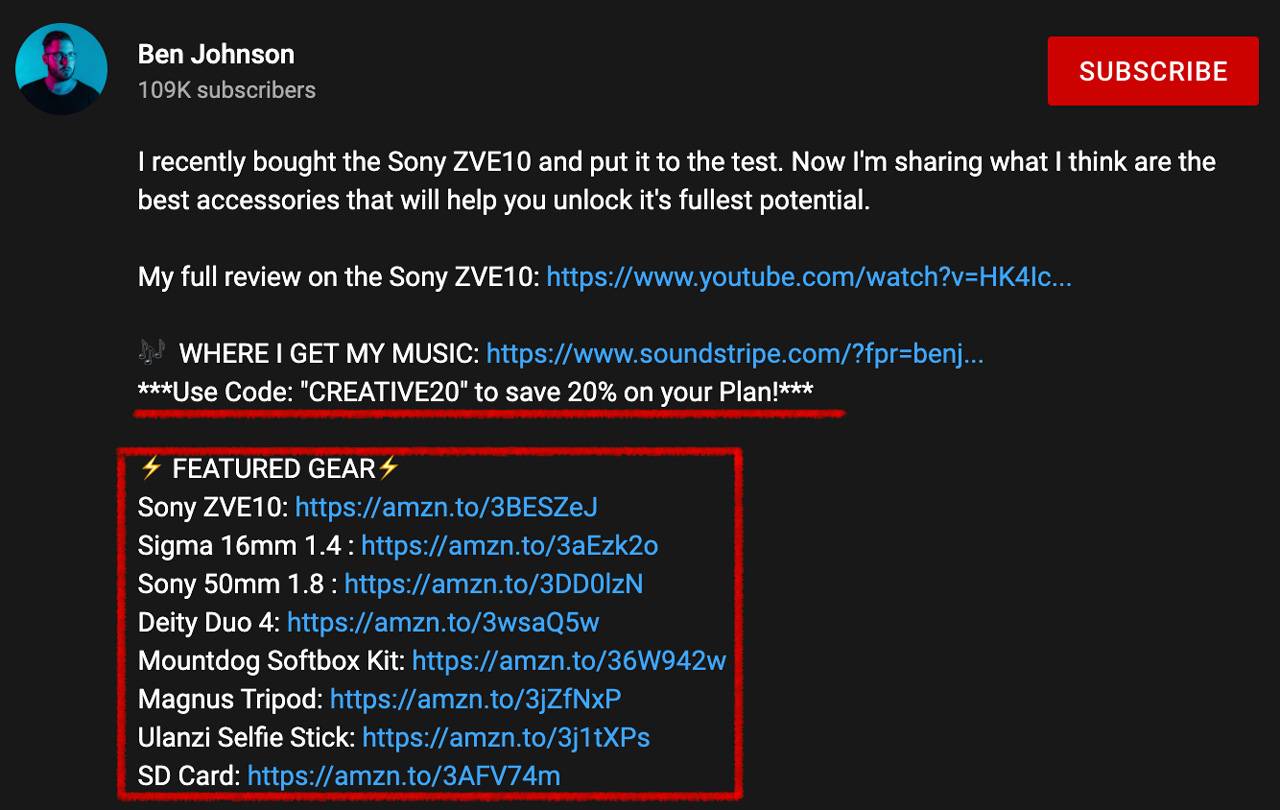
Hint: Always add relevant affiliate links to your videos. If you do a tutorial for a GoPro camera (for example), ask viewers to use your affiliate link when purchasing the product.
According to Amazon, affiliate commissions are up to 10% of each product sale. So if you spend some time promoting the links, you’ll make a nice chunk of money.
3. YouTube Fan Funding
With 500 subscribers and 3000 hours of watch time, creators can unlock this feature and monetize directly from their audience through three main avenues:
- Channel memberships provide exclusive perks like loyalty badges and private streams to your fans, offering a customizable way to earn money on YouTube. Prices for memberships can range from $0.99 to $100 per month.
Read this post to learn more about Channel Memberships and how to qualify for them.
- Super Chats are another way to monetize YouTube live streams. These are “donations” or “tips” ranging from $1 to $500 that viewers send creators during a live stream.
Read More: What Are YouTube Super Chats?
You’re in an excellent position to receive Super Chats if:
1. You’re a funny or entertaining person.
2. You host live streams on YouTube regularly.
3. You have hardcore fans who are vocal in the live chat section (where Super Chats are donated).
In fact, that's how Travis McPherson, customer success manager at vidIQ, made $200 on a live stream that only had 150 viewers.
- Additionally, YouTube's Super Thanks feature allows viewers to buy digital goods like stickers to show appreciation for your content. Promoting this feature in your videos can encourage more use of Super Thanks.
Read More: How to enable Super Thanks on your channel?
4. YouTube Shorts
Creators across all genres received some fantastic news late last year. As of February 2023, the YouTube Shorts fund is officially gone! Shorts creators can now sign up for YouTube's Partner Program and start making money from ad revenue. All you need is:
1,000 subscribers and 10 million eligible public Shorts views in the last 90 days.
OR
1,000 subscribers and 4,000 valid public watch hours on long-form videos.
Let's go through the revenue-sharing model for YouTube Shorts. First, this new approach splits advertising revenue in three directions: between creators, music publishers, and YouTube itself. Money is pooled, calculated, and distributed as shown:

Overall, Shorts monetization for creators is based on the number of views they got, their location, and the music tracks they used.
If a Short uses two music tracks, 66% of the revenue goes to music publishers and 33% to the creator. For one music track, it's a 50/50 split.
If no music is used, the creator keeps all their revenue. Creators generally retain 45% of their share from the creator pool after accounting for music usage.
Here's a video explaining it all!
Having a monetized YouTube channel is everything when you want to become a serious creator.
But one day, you may want to monetize outside of the platform. Here are seven lucrative ways to make money beyond YouTube.
